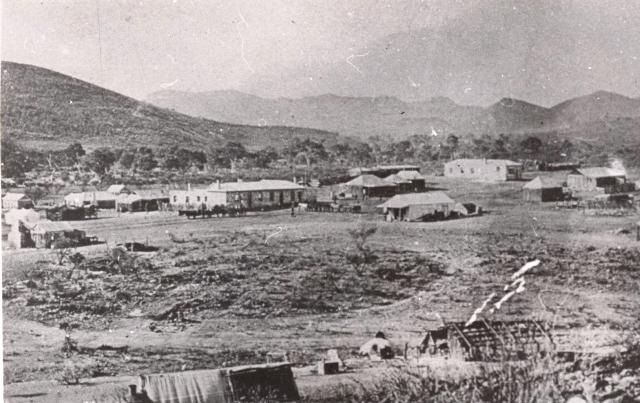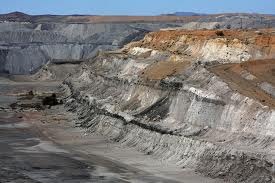Mining
For possibly tens of thousands of years Aboriginal people mined red ochre – a particularly valued "shiny" or iridescent variety – from mines in the ranges near Beltana.
This ochre was mixed into a paste and formed into blocks with a head-shaped indentation that enabled it to be carried many hundreds of kilometres to central Australia. The arrival of European pastoralists and settlers disrupted this age-old trade and after a manager of Beltana Station shot members of a mining group passing through in 1863, the trade came to a halt.
The expansion of pastoral interests in the area coincided with a frantic search for minerals. In 1870 copper was discovered at Sliding Rock 30km to the east of Beltana.
Sliding Rock (named but not known as Cadnia) was surveyed in 1872 and then extended in 1876 and at the height of copper production was home to 500 people. However in 1877 significant water was struck at the mine, too much for the pumps to manage, and it failed, with many miners and their families moving to Beltana.
To the west the Ediacara silver-lead mine had a short lived boom around 1890 and many small copper mines were worked around the township of Beltana itself. In 1946, 650 million year old fossils, the oldest known fossils of multi-cellular animals in the world, were discovered at Ediacara. The area was declared a Fossil Reserve in 1958 and was included in the National Heritage List on 11 January 2007.
Coal was also discovered nearby at Leigh's Creek in the first burst of exploration in the 1880s. Of poor quality, it was mined on and off until 1943 when the South Australian State government took over the lease. The operation became open cut and the coal was transported by rail to the Northern Power Station at Pt Augusta until 2016. The mine subsequently closed and the town returned to Government ownership. Education, Police and medical services are being maintained however the Leigh Creek town population has significantly declined.



